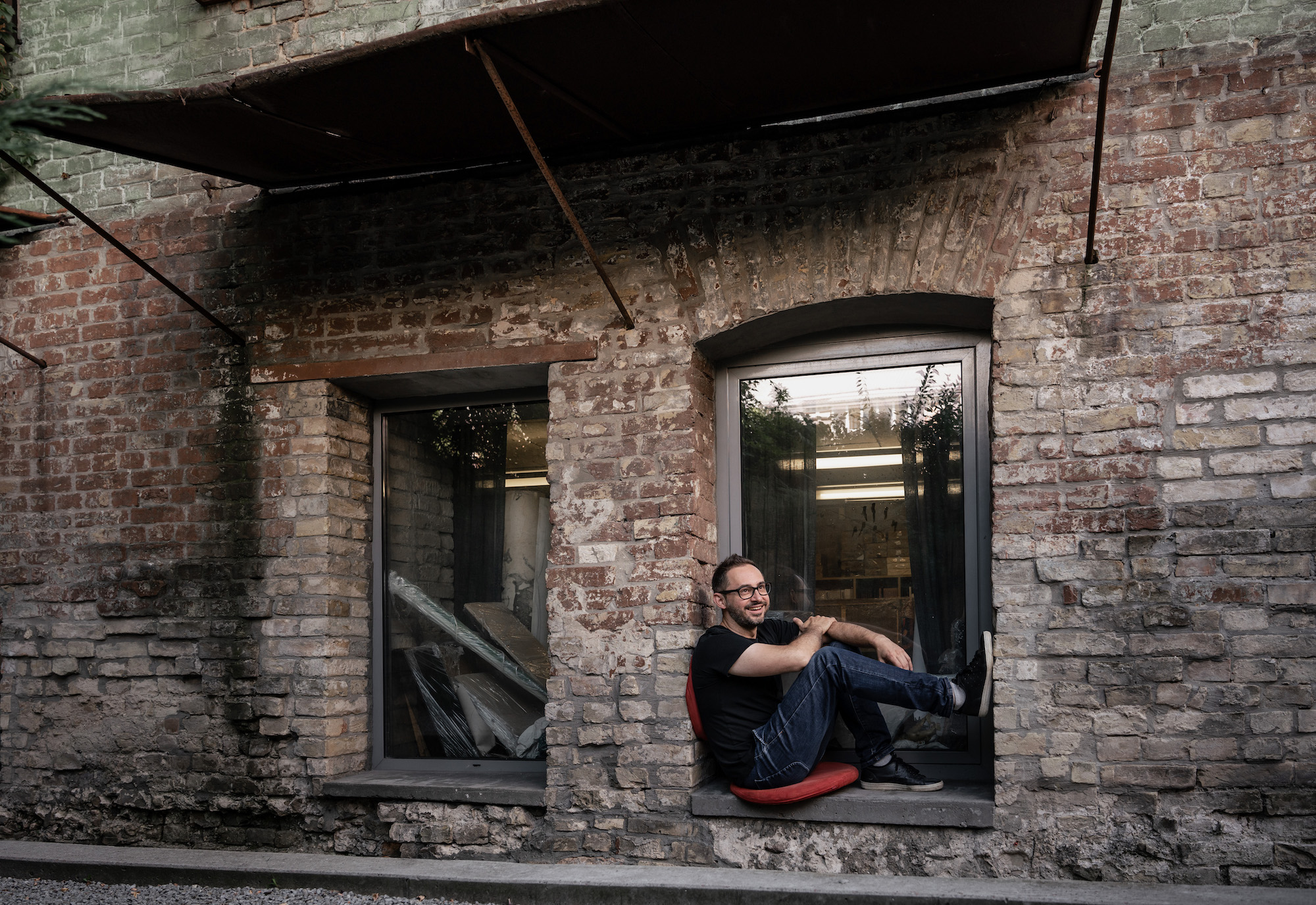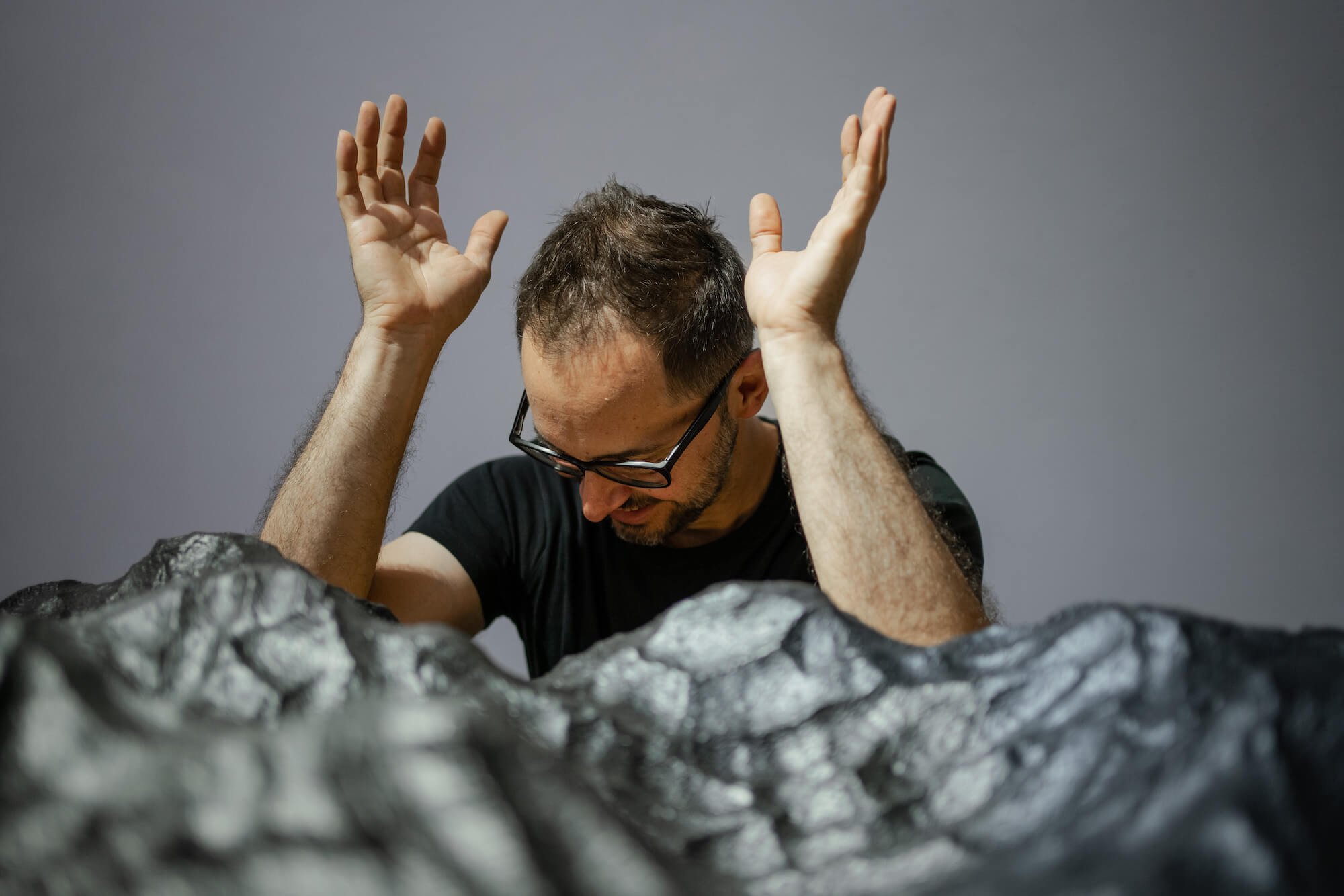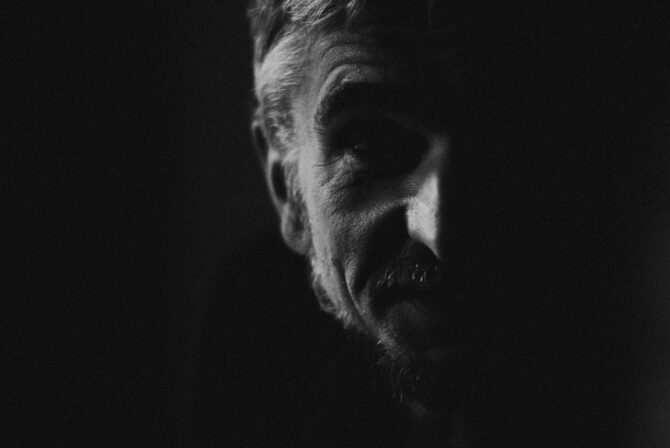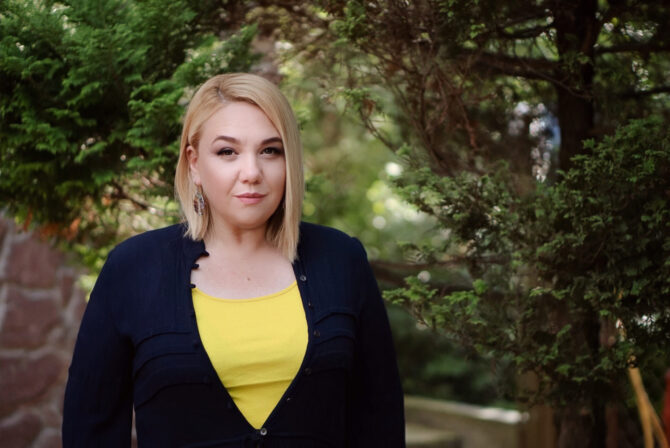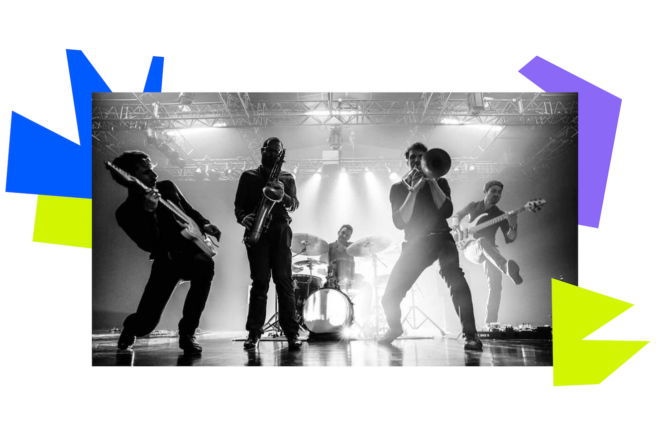He is called a visionary of contemporary Ukrainian art. He collects art in all its manifestations: from books to bent beechwood chairs. He preserves and opens up new layers of Ukrainian culture and searches for new expressive images. Pavlo Gudimov is the founder and curator of Ya Gallery, art centers in Kyiv and Lviv, a musician at Gudimov, and a former guitarist for Okean Elzy.
§§§
[Цей портрет створений завдяки Спільноті The Ukrainians Media — тисячам людей, які системно підтримують якісну журналістику. Приєднуйтеся!]
§§§
A gallery in an old Austrian apartment
The old floor creaks. The street noise creeps up toward the high but well-preserved wooden windows of an apartment in an Art Nouveau building in Lviv. Brass door knobs, an old tiled stove from Austrian times. High white walls, stucco, flowers in a vase on the table. Books, sculptures, paintings. Visitors talking almost in whispers about what they see. We meet Pavlo Gudimov, the gallery’s founder and curator, in this Lviv apartment from the Austrian era, now transformed into an art space, Ya Gallery, at 8 Shota Rustaveli Street.
“My mission,” says Pavlo, “is to create one of the most original museums of contemporary art. And an apartment in an Art Nouveau building is part of that idea.”
Ya Gallery is a network of art exhibition spaces in Kyiv and Lviv. The concept of Lviv is special. In an apartment in a building that is an architectural monument from 1905-1906, contemporary narratives are expanded and become part of the local historical landscape. The gallery organizes not only exhibitions. The art center hosts lectures and workshops, round tables and debates, initiates museum projects, and organizes exhibitions of Ukrainian artists abroad. It collects a library. It brings together people, history, thoughts, and values. It unites and shows what is really important. The gallery has not been closed since the beginning of the all-out war. On the contrary, it has breathed new life into the artistic community of Lviv. Curatorial tours, exhibitions, and lectures are held not only in Ya Gallery but also in other artistic places in the city and the country.
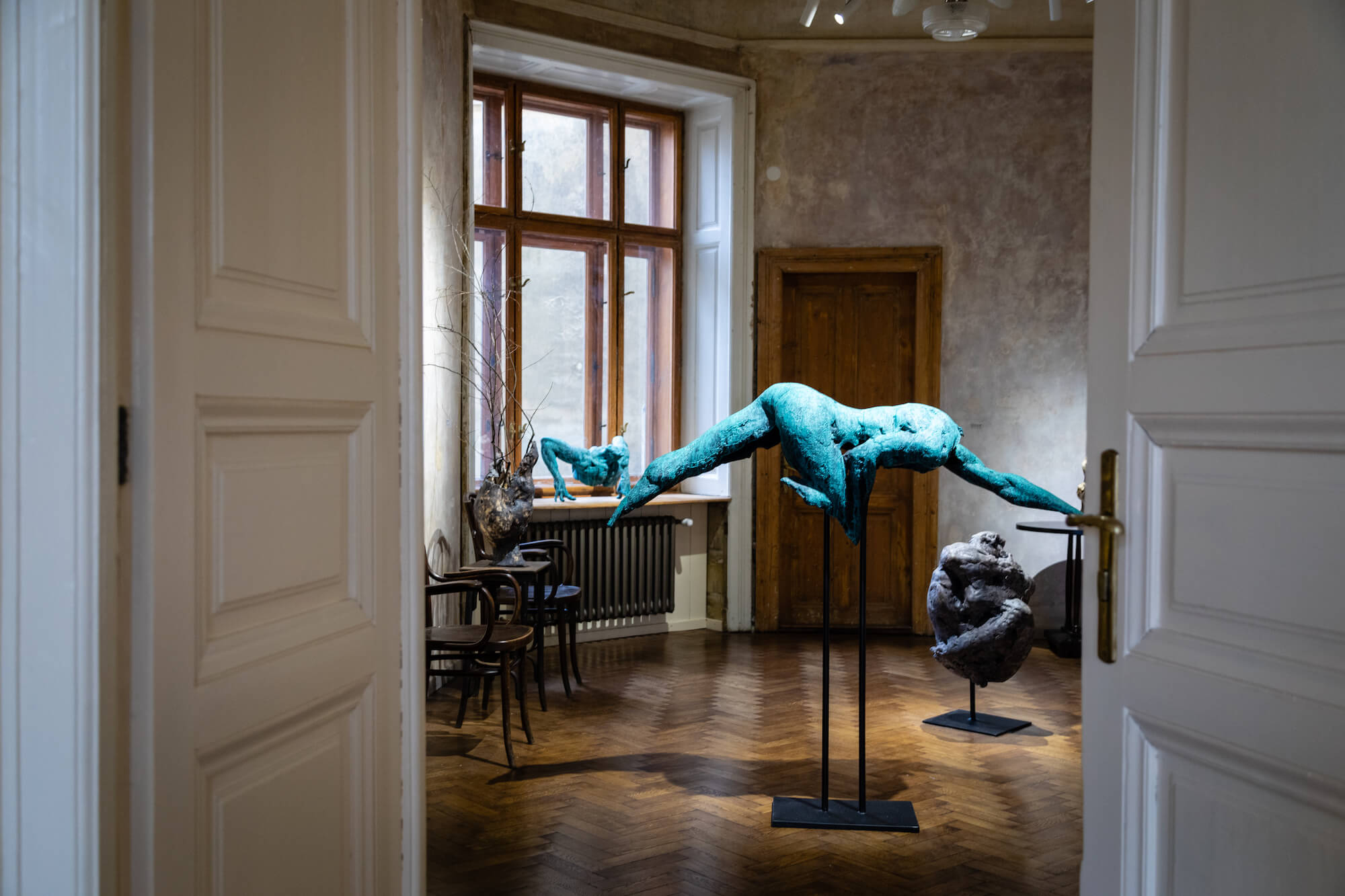
“To say that it is not the right time for culture is a false statement. One should be clear about the role of culture in the development and education of the country. As creative professionals, we must not wait for the government to do something. We must take personal responsibility. This sets us apart from a world where everyone is just waiting. We have this priority: we do not wait, we act. We follow Walt Disney’s advice, “The way to get started is to quit talking and begin doing.” Ukraine is following Disney’s advice. Our proactivity is our great advantage.”
Pavlo explains that art is a continuous process.
“When we talk about culture, we need to look at this concept more comprehensively. For example, we need to understand that our food, our surroundings, the words we use, and our environmental awareness are all indispensable parts of the culture.”
A grandfather’s room
Architectural designs and drawings. Paintings and old photographs. Meanings, images, fragments. All this formed a mosaic and a panopticon of Pavlo’s imagination as a child. His mother was an architect and engineer, his grandfather the chief engineer of the Lviv Railway, who captured the days he lived on photographic film.
Pavlo grew up constantly exploring new forms and senses that filled his family’s home in Lviv. As a young boy, he was curious about what his grandfather did: architecture, design, collecting, photography. It was then that certain reference points crystallized in Pavlo’s world, programming his lifelong love of art.
“Visiting studios of Lviv artists with my mother, when I was a child, grandfather’s film photos, his architectural pursuits—all this inspired me to explore the world. And the environment and communication in my family formed a foundation for it,” Pavlo recalls.
Visits to the Lviv Ceramics and Sculpture Factory and the works of a Ukrainian artist and ceramist Zynoviy Bereza, which his grandfather kept in his bedroom, awakened in Pavlo a special love for authenticity and traditional and folk art. A puppet theater, making puppets of all shapes and sizes, skilled puppeteers, and the magic of theater arts were also important elements in the landscape of his interests and fantasies as a child.
“Children should have free time where they can be by themselves,” Pavlo says. “I was not overwhelmed with all kinds of clubs. My family was not very rich, but not very poor either. I am grateful to my parents for raising me with a sense of beauty and introducing me to the world of art.”
Pavlo says that it was his grandfather’s room and his interests, which encompassed the entire universe, that inspired him to collect art as an adult.
“The Thonet chairs we sit on were also my grandfather’s fascination,” he adds.
The values that Pavlo’s family nourished were mainly about inner freedom, humanity, and creativity. Sometimes also about resistance. Pavlo Gudimov’s grandfather was one of the thousands of dispossessed Ukrainians and therefore had an aversion to everything Soviet and to the ruling party, which he flatly refused to join. He said that one should rise to the top only through one’s knowledge and professional achievements.
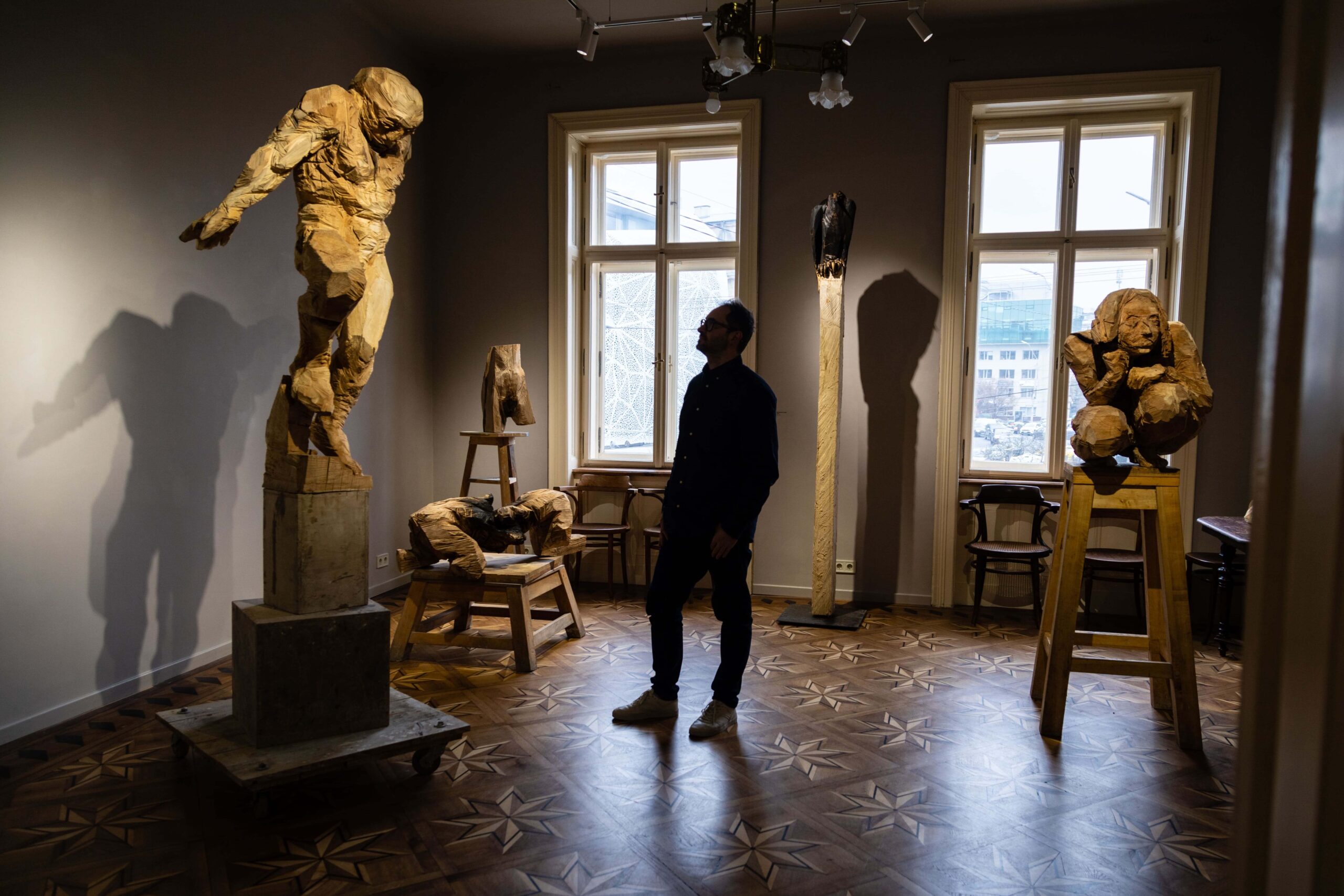
“I learned from my grandfather,” Pavlo says. “I try to be as neutral as possible toward political parties and movements.”
Finally, Pavlo Gudimov’s early passion for music also stems from his family’s love of it. The budding musician was given his first guitar by his grandfather, and his stepfather owned an extensive record collection. Later, Pavlo got himself a rarity in New York—the same slide guitar as Ron Wood of the Rolling Stones, a Fender 1953.
A forge for mediocrity
The Soviet school system in the 1980s did its best to raise a Soviet obedient and mediocre child. The French language, rock music, and friends who held the same views as he did became Pavlo’s lifeline.
“In the last years of school, I was chronically absent,” Pavlo says. “I had conflicts with the military instructor and the music teacher—they threw me out of the classroom in the first minute of class. I could not stand the drill—I have an innate sense of freedom.”
Iryna Starovoyt, a cultural scholar, literary critic, and poet, says the Soviet school system suppressed individuality from an early age. Instead, it raised the silent majority whose main principle of life and survival was ‘not to stand out.’
“It was school that laid the foundation for a paranoid mindset that everyone hates and threatens us,” she says.
“In school, children were taught to obey adult authority without question, and administrators turned a blind eye when students abused their age superiority over younger children, which later continued in the army in the form of hazing.
Students were also encouraged to inform on their classmates or teachers. Straight-A students could not necessarily enroll in a university they had dreamed of—certainly not on the first or second try, because the enrollment system was completely corrupted, especially under Brezhnev.”
In nostalgic memories of the Soviet Union, one often encounters a cliché about the ‘high’ level of Soviet education, especially in schools. However, Iryna Starovoyt believes that this is a distorted perception of a sugar-coated memory. Soviet schools were nowhere near new technologies, and chalk and blackboard remained the basic tools for acquiring knowledge—from the 1920s, when USSR was just established, to the 1980s, shortly before its collapse.
“The Soviet school prepared children to become cogs in the system. It offered no real choices or opportunities to develop one’s talents. The school was boring, and the teachers knew no other way of life than the Soviet one. They had never been abroad and could neither support free thinking nor embody nonconformism.”
Thus, Pavlo Gudimov spent his time in school trying not to become part of the system and lose the artistic mindset shaped by his mosaic environment.
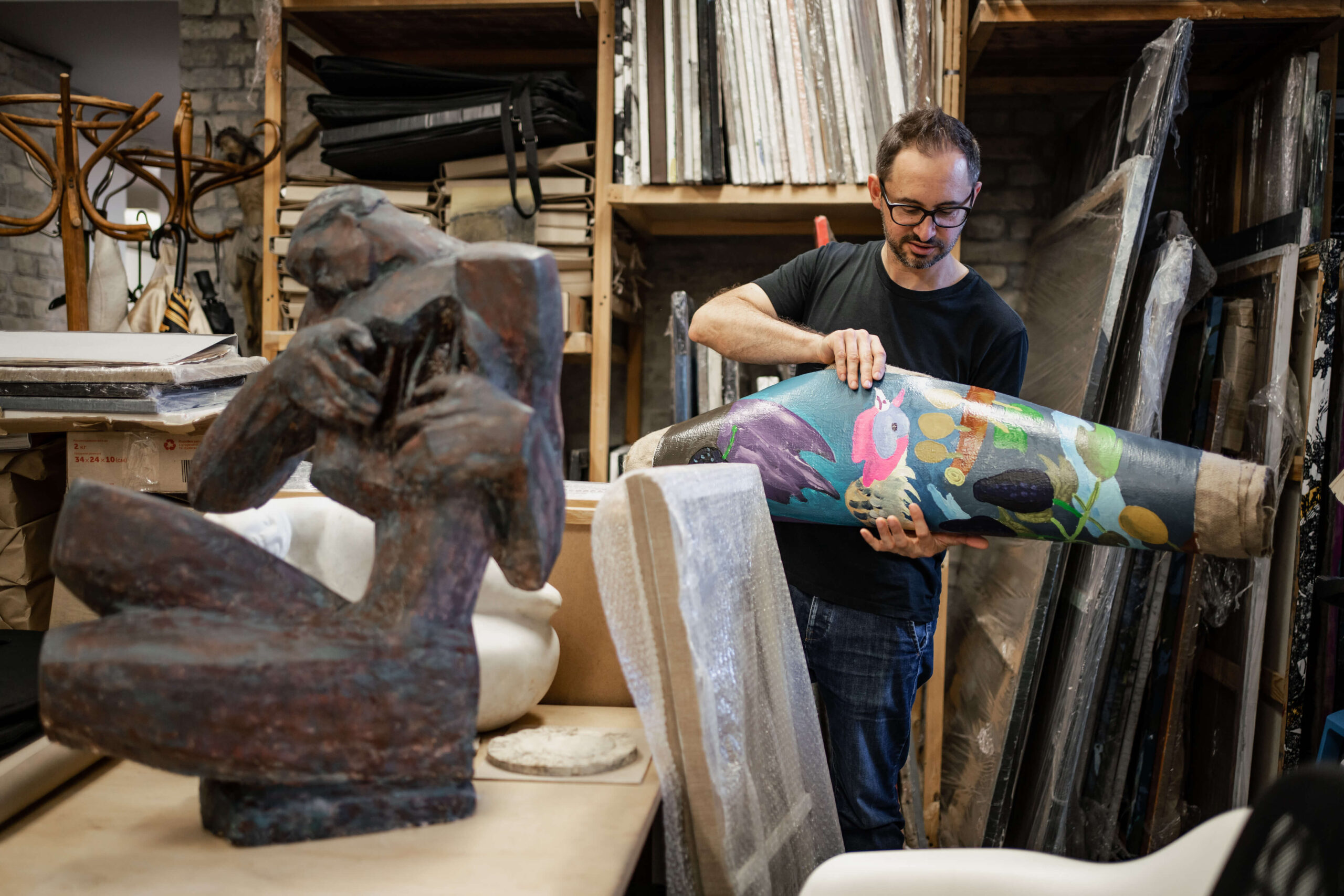
“I protested,” he says. “The school is a forge for mediocrity, like in that song by Pink Floyd.” Pavlo is referring to “Another Brick in the Wall,” a composition by the British rock band in which one of the lines reads, “Hey teacher, leave the kids alone….”
In a free, artistic world
The early 1990s brought significant changes in Pavlo Gudimov’s creative and professional life. The spirit of freedom hung in the air. The protests of the youth and the struggle for the right to an independent Ukraine. The hope for personal freedom and the possibility of building a new artistic community in Ukraine.
Already from the mid-1940s, the geographical and political location of Lviv in the project of Soviet Ukraine was special: it was a borderland with numerous hidden ‘windows’ to Europe.
The city was conquered through extreme violence, persecutions, and deportations, and the KGB marginalized and subjected dissidents and creatives to its vigilant control through censorship and the system of permits issued by the art councils. Nevertheless, they could not completely erase the links with the rest of the world, with pre-Soviet modernism and with the authentic traditions of folk art. Contemporary Ukrainian culture proved to be vibrant, fashionable, provocative, youthful, and aware of its roots—and it no longer fit into the narrow framework of social realism. This is the image of Lviv in the early 1990s that Iryna Starovoyt remembers. Together with other artists and intellectuals, she lived through a challenging period of creating a new Ukrainian culture.
“There was a creative resurgence,” she says, “in things big and small, in institutions, workshops, and kitchens, in rock bands in schools and cultural centers, in amateur choirs and theater clubs at plants and factories. This outburst of liberation and renewal in Lviv was embodied by the “Vyvykh” festival in 1990 and 1992, the self-organization and environment of the Student Brotherhood, and the founding of the Dzyga Art Center right after the proclamation of Ukraine’s independence.”
Pavlo remembers this period as a time of growing up and self-improvement. He studied at the Institute of Forestry Engineering (now the National Forestry Engineering University), majoring in landscape architecture. He undertook his first long expeditions with his fellow students and began to develop new ideas about music and art in general. As a student, Gudimov dreamed of creating his own music band. At that time he met the artist Ihor Yanovych, with whom he still collaborates today.
“Every artist helped me realize that the art world is profound. You do not just want to have contact with it. You want to contribute to it.”
In 1991, former classmates and then students—Andriy Holiak, Pavlo Gudimov, Denys Hlinin, and Yuriy Khustochka—formed their own band, Klan Tyshi (“The Clan of Silence”). None of them had any musical training. The band played depressive art rock and performed in schools and cultural centers in their hometown of Lviv. Two years later Andriy Holiak left the band. But in the summer of 1994, Sviatoslav Vakarchuk, a 19-year-old student, joined the band. Rehearsals became regular, and Klan Tyshi gave birth to a new band, Okean Elzy, which would later gain cult status. One of their first big gigs took place in front of seven thousand people near the Lviv Opera House when it was -7 degrees Celsius outside. Hundreds of club concerts, the tour, the festivals Chervona Ruta and Tavriyski Ihry, the recording of the Deka show, and self-organized solo performances in the Petrushevych Palace in Lviv followed.
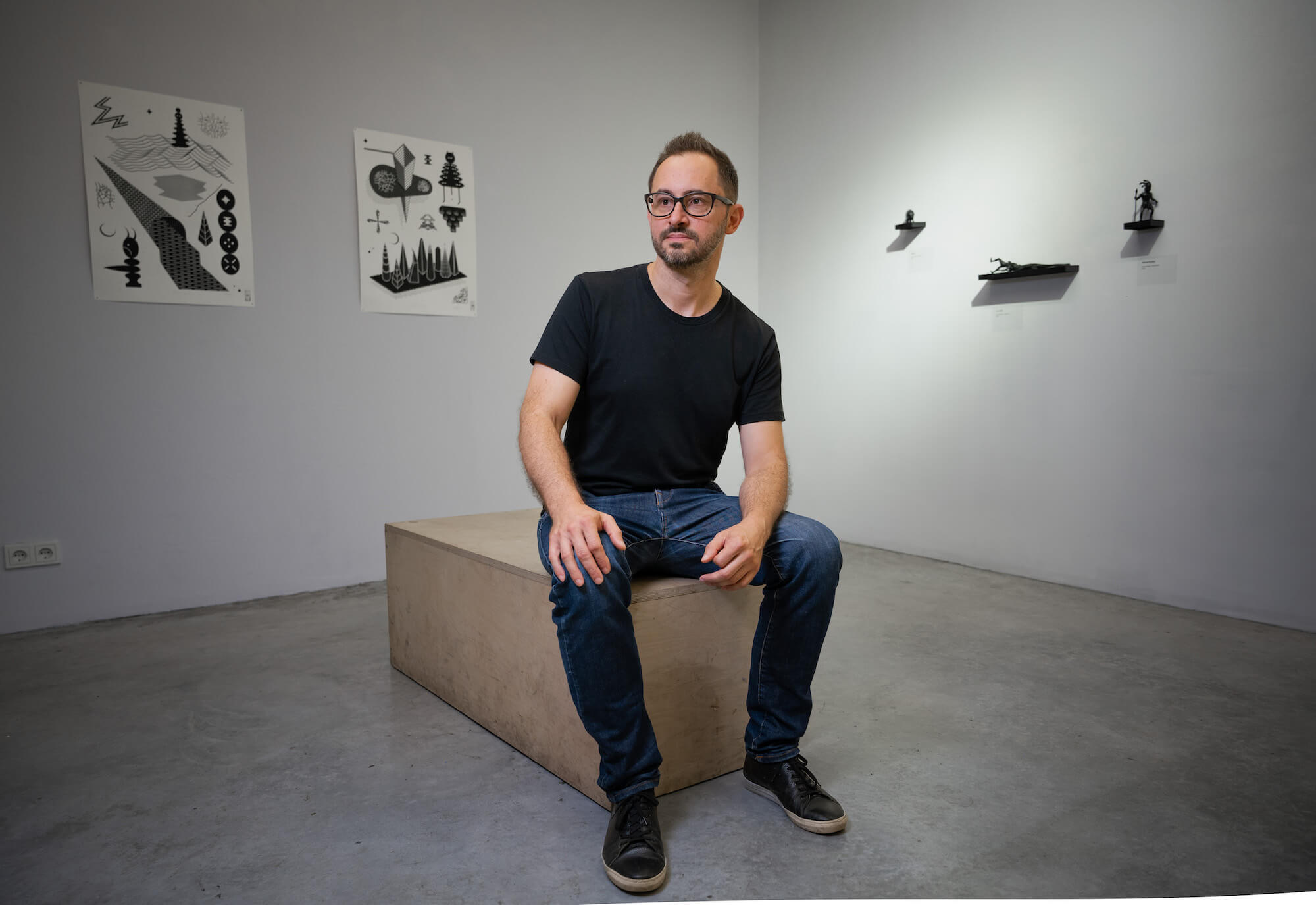
In 1998, Pavlo moved to Kyiv together with the other members of Okean Elzy. He played guitar in the band for over a decade. In 2005, he formed his own band, Gudimov, and began to actively combine his musical and artistic careers.
The country of my dreams is a country of culture
Almost thirty years have passed since then. In the 1990s, Pavlo sought thrills in music, and since the 2000s and until today in art. He founded his architectural studio Ya Design in Kyiv, where he also organized the first exhibitions of Ukrainian contemporary art. A little later, in 2007, Pavlo opened the first art center Ya Gallery in the Podil district of Kyiv, and in 2019 the second one in Lviv, in an old apartment in a building from the early 20th century. Almost twenty years later, he moved from the capital back to his hometown.
“In Lviv, the local government sees itself as one with the community,” he says. “You can have a meaningful dialogue with the chief architect, the mayor, or the governor, and that accessibility shapes the culture, the image of an open city.”The clatter of trams seeps into the gallery space as we talk. Yuriy Biriulov’s monograph, Lviv Sculpture, is on Pavlo’s desk. According to Pavlo, the sculpture is a distinct art phenomenon in contemporary culture. Gudimov talks about his exhibition, The New Lviv Sculpture, currently on view at Ya Gallery. He says that this project aims to change the positioning of sculpture in space: from ideological to creative. It aims to give sculptors an opportunity to look at their work from the outside and allow the public to explore the artistic phenomenon of new sculpture that is slowly emerging in contemporary Ukrainian culture.
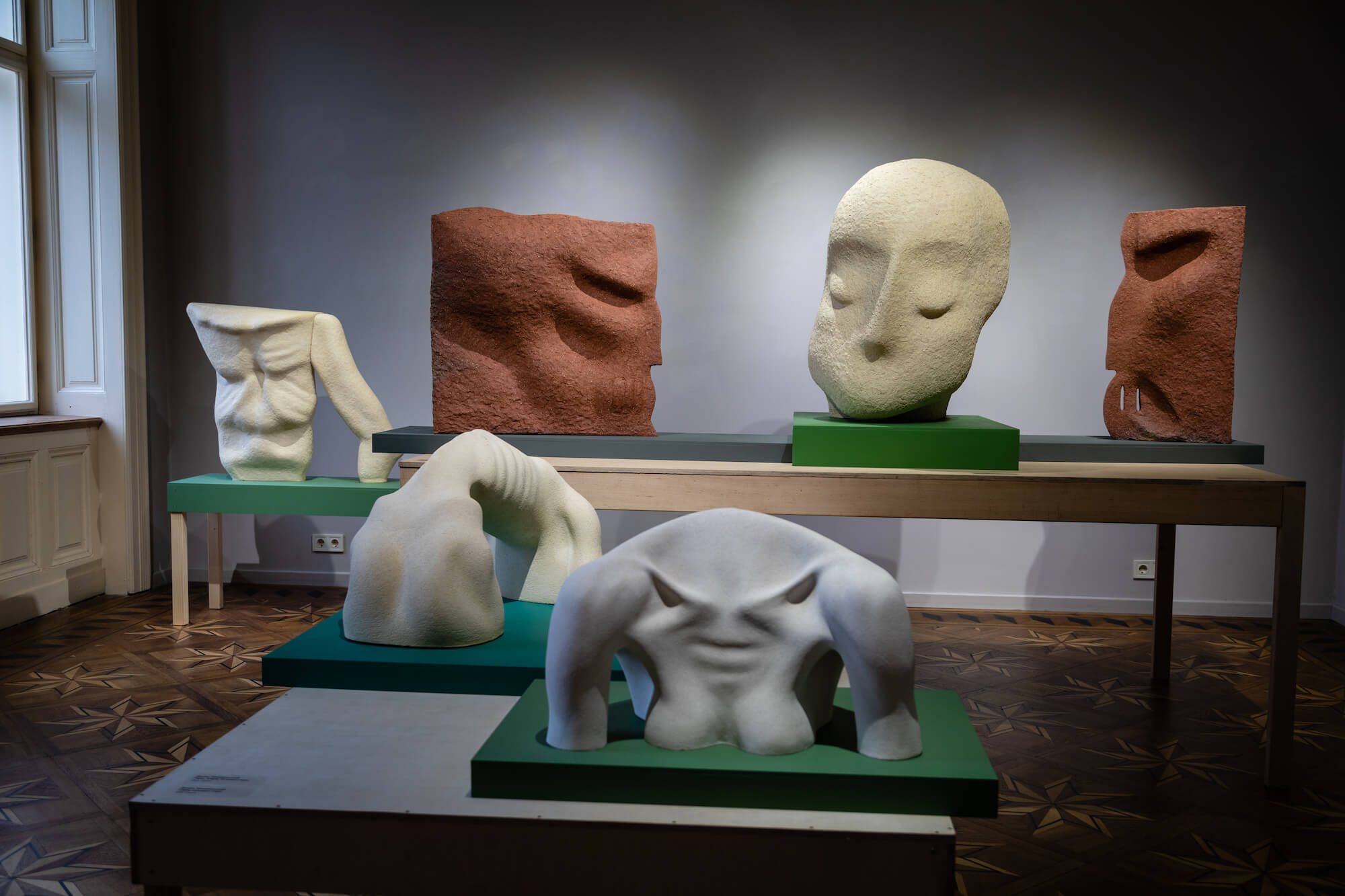
“Sculpture is a complex genre that requires many resources and much effort,” Pavlo says. “The half-measures of today that remain in sculpture will die off. Soon, when new generations of artists and groundbreaking changes come, there will be another transformation of Lviv and all Ukrainian sculpture.”
Lviv, Gudimov points out, is a city museum, and this is not a metaphor, but a real, complete immersion in the architecture and landscape of Lviv. Pavlo has had a deep love for it since childhood.
“The city—its parks, its architecture, its streets—is what makes you realize that you are in a comfortable environment and long to explore it,” he says. “This is a very nurturing environment. You have a big part in that. You are working around the clock to achieve something—and you feel like it’s coveted. What’s worse is when you feel that imbalance in the culture, when you are working, but you cannot see who you are doing it for.
There is an amazing audience in Lviv that has changed from a local audience to a national one during the war.
It is necessary to create a cultural product and at the same time build up a demand for it. The Angels, the exhibition we presented in 2019 at the Lviv Borys Voznytskyi National Art Gallery, which I curated, attracted 37 thousand of visitors in two months. Given the population of Lviv, this is a larger percentage than average in many European cities, because only 3 to 5% of residents usually visit such projects.”
In 2019, The Angels became a milestone in Ukrainian culture and at the same time the biggest art event. Three years of preparation and over 400 exhibits. However, Pavlo has curated many other important exhibitions, including The Aeneid Project, The Shadows of Forgotten Ancestors: An Exhibition, Metropolis, Lesia Ukrainka: 150 Names, Chornobyl: A Journey.
“I am more of a curator, working with concepts and ideas and initiating events and exhibitions,” Pavlo says. “That’s my priority, but then there’s curating and management as parts of the whole cultural process, so I am in a multidisciplinary space all the time. You must have a good sense of a lot of things, but there has to be something that you understand and focus on the most as a professional. You have to properly and critically assess your resources and the resources of your team. If you have a team behind you that can organize what you cannot, then you can move mountains. Then you know the direction you should be moving in, and your colleagues know it too.”
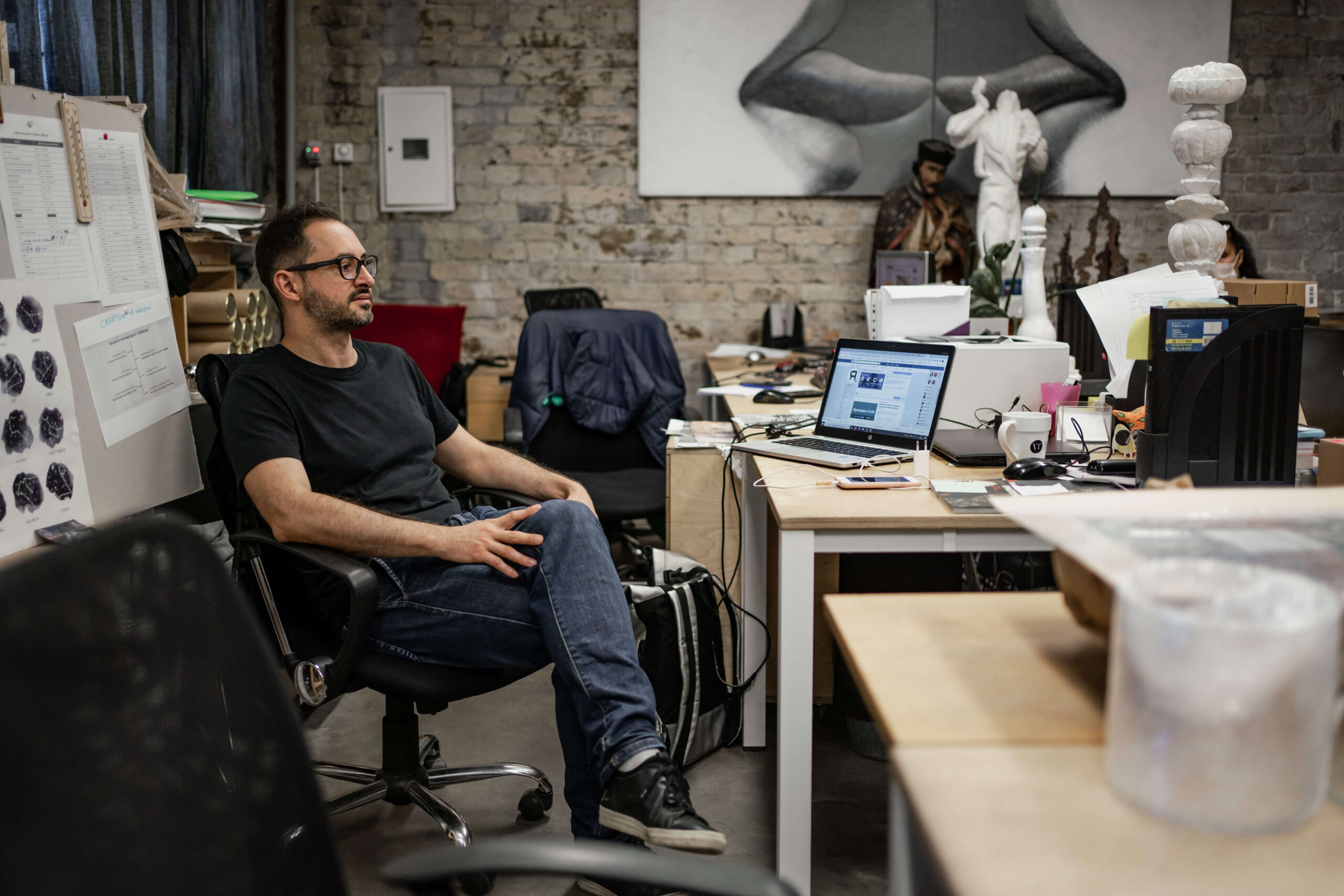
For the future, Pavlo sees Lviv as a powerful platform with proven approaches, opportunities for training in cultural management, and new generation of creative professionals. With the formation of local cultural environments and broader reform of cultural decentralization.
Pavlo believes that culture is a significant and universal tool. It is necessary to bring people to it—give lectures, organize tours, tell, and show.
“The country of my dreams is a country of culture,” he says. “And it’s Ukraine, not France or Germany. To live at home and contribute to creating all this organically. What are the grounds for this? There are people in Ukraine who sincerely love art and culture.”
Light in the age of blackouts
Diana Klochko, art historian, exhibition curator, editor, translator, lecturer, and writer, considers Pavlo Gudimov a contemporary visionary of Ukrainian culture. They met in 2010 at Ya Gallery in Kyiv. She remembers their first conversation as easy, pleasant, and interesting.
“Pavlo has a special talent for noticing the small things in his panoramic, large-scale vision,” she says. “He brings people together around him. At the same time, Pavlo is very demanding as a curator, but not a bully. He takes into account the fact that people have different capacities, especially mental and emotional ones.”
Diana Klochko believes that the idea of a network of gallery spaces is a new format for the creation of contemporary art in our country. She considers the conceptuality of the Lviv Gallery to be a unique phenomenon, where the sense of modernity and thus the presence in the here and now is not lost amidst the historical past.
The art historian focuses on the lighting in the gallery. She says, “The lighting in Ya Gallery is systemic and complemented by vintage chandeliers that form an ensemble. It can be adjusted for each individual exhibit, each fragment of the exhibition. All this sets the place apart from other galleries. Here, for example, you can take expressive photos with a regular smartphone.”
“Moreover,” she adds, “in the age of blackouts, the sense of light and darkness is changing. Pavlo proves with his Ya Gallery that it’s possible to keep the bar high, even as we live by groping in the dark. His mission is to keep the bar high and set a new one by raising the level of the visual.”
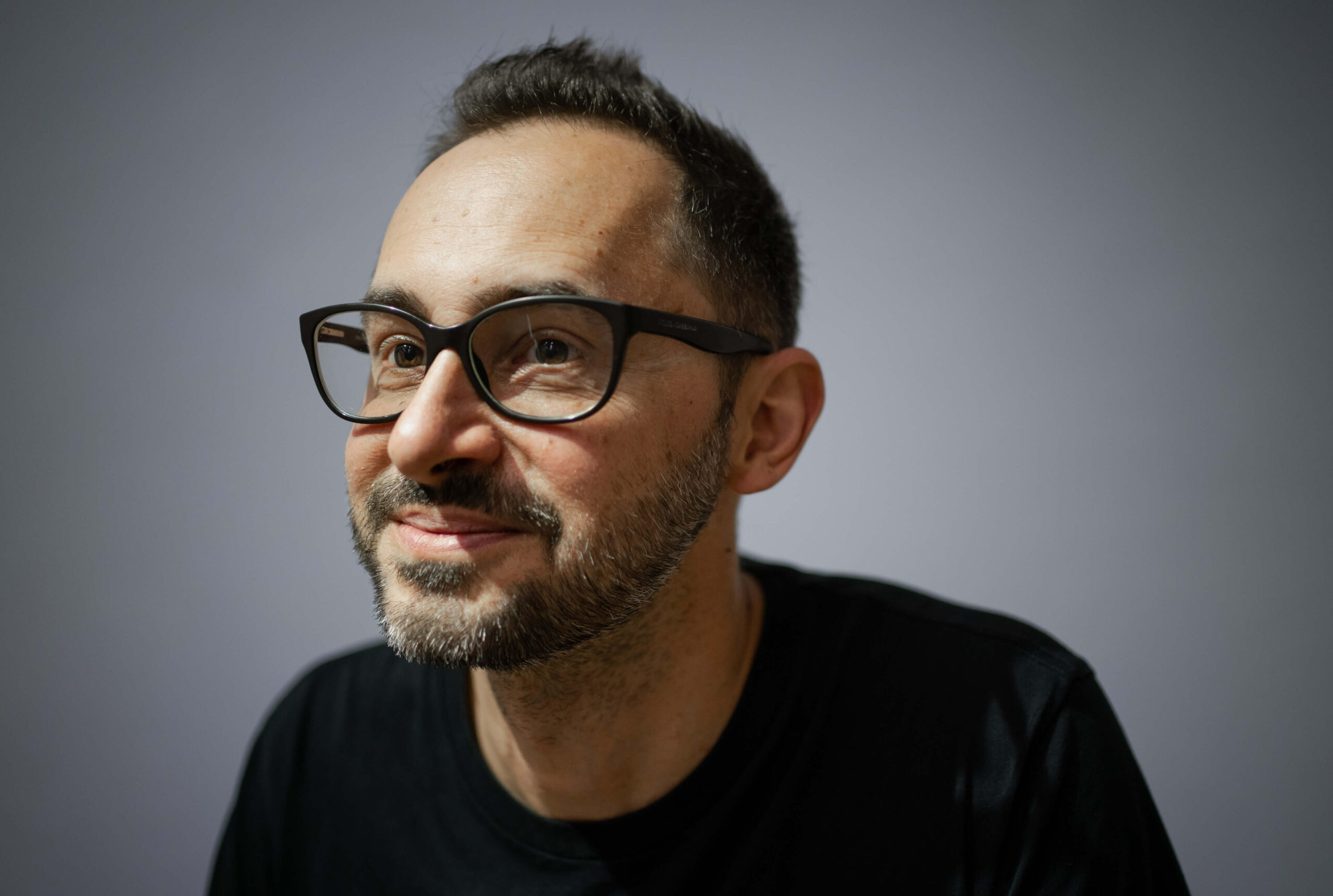
War is changing the way we think about everything, both in our daily lives and in our creative and professional careers. This means that the focus of Ukrainian post-war art will also change significantly. Pavlo says that Ukraine is already in the process of not only reclaiming its territories but also consolidating the cultural identity of Ukrainians.
“Today’s Ukrainian elites are very determined and active. They are programming new firmware for Ukraine as a modern, dynamic, and talented country. Against all odds, the war is opening up enormous opportunities, both inside and outside the country.
Art is a constant process, and all changes and shocks have a significant impact on it.
Especially those that are as challenging as we are experiencing now. Artists find it difficult to create when their lives are always comfortable and balanced. Meanwhile, emotional intensity often heralds the period of masterpieces. Today, these emotional upheavals in our history must also benefit world art.”
***
The war speaks with different voices. Sad, quiet, tired. Heavy and bitter. But despite everything, there is still room for humanity and love—through empathy for others. Through music and art. Through the inner voice addressed to ourselves. In our churches, organs still play while outside the air-raid sirens wail and Ukrainian cities are shelled by Russian missiles. And in our homes, we still listen to Johann Sebastian Bach or Leonard Cohen. And we believe that the sense of will is our most powerful shield. And our armor.
“For me, victory is a very broad concept: it is not only victory in war or in the domain of information or culture,” Pavlo says. “It is the ability to feel victorious, a special state. Sometimes you can feel victorious even if you lose. This feeling is extremely important. In this war, we have demonstrated our innovation mainly in the military domain. Now we need to prove it in the culture so that the world will look at us with interest and thus partner with us. I am optimistic about the future. I believe that our multiculturalism is important in the global cultural context. That is what unites us. Freedom and will are ever-present ingredients of culture. There will be nothing left after us but culture.”
